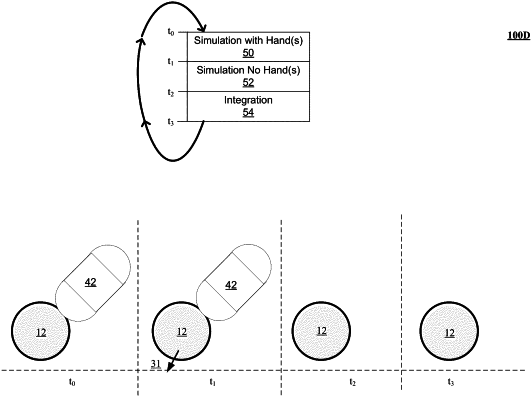| CPC G06F 3/011 (2013.01) [G02B 27/00 (2013.01); G06F 1/163 (2013.01); G06F 3/017 (2013.01); G06F 3/0304 (2013.01); G06T 19/006 (2013.01); G06T 2215/16 (2013.01)] | 20 Claims |

|
1. A method of determining a friction response to a soft contact collision between at least one of a set of virtual objects defined according to virtual object definitions and a portion of a colliding hand that collides in a logical frame defined by a real time physics engine (RTPE) including a simulation of rigid bodies in a physical system that satisfies a human visual system's expectations for interactions with virtual objects in a virtual environment, using real motions of one or more hands in a three-dimensional (3D) sensory space, the method including:
determining a first solution of interactions between at least one virtual object in a set of virtual objects simulated as rigid bodies and a representation of at least one hand, the first solution including a friction response to a soft contact collision between the at least one virtual object of the set of virtual objects and a portion of the at least one hand colliding with the at least one virtual object;
determining a second solution of interactions between the at least one virtual object in the set of virtual objects simulated as rigid bodies absent any effects of the at least one hand; and
integrating the first solution with the second solution; wherein results of the second solution are prioritized over results of the first solution.
|